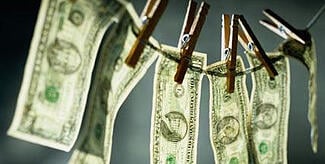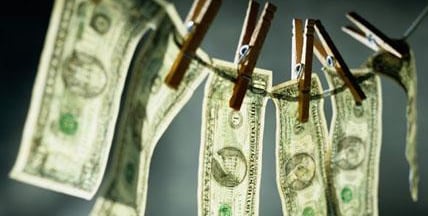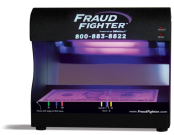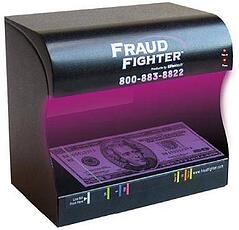Passing Counterfeit Money Through Retailers is a Multimillion Dollar Industry
 Every year, millions of "fake" notes are passed over retail counters and the majority are not identified as counterfeit until they're examined by the bank. Most often, retail associates don't know how to identify legitimate money or they rely on the simplest of all anti-counterfeiting tools; the counterfeit pen. Unfortunately, relying on the pen alone is not going to catch anyone other than an amateur who is printing money on a laser printer.
Every year, millions of "fake" notes are passed over retail counters and the majority are not identified as counterfeit until they're examined by the bank. Most often, retail associates don't know how to identify legitimate money or they rely on the simplest of all anti-counterfeiting tools; the counterfeit pen. Unfortunately, relying on the pen alone is not going to catch anyone other than an amateur who is printing money on a laser printer.
What Is A Counterfeit Pen?
A counterfeit pen is simply an inexpensive device that is designed to determine if a bill is genuine or counterfeit. The pen contains a tincture of iodine as ink which, when drawn over a legitimate bill, will remain amber or brown. According to one manufacturer the ink will turn black if the bill is counterfeit.
How Does A Counterfeit Pen Work?
The iodine in the pen reacts with starch, which, is the primary component that makes white paper look brighter. Most commercial paper, made from wood pulp, is brown unless bleached and starched. If there is no starch present in the paper then the pen will indicate - by remaining amber - that the bill is legitimate.
The fallacy around this theory is that sophisticated counterfeiters will not use paper that contains starch. Instead they will obtain or replicate paper that is made from cotton fibers like those used in U.S. currency.
How Do Counterfeiters Defeat the Pen?
One method for obtaining "legitimate" paper that will fool any counterfeit pen is to wash a small  denomination bill in bleach and use the resulting paper to print a larger denomination bill. When a counterfeit pen is swiped over one of these bills it will appear as legitimate.
denomination bill in bleach and use the resulting paper to print a larger denomination bill. When a counterfeit pen is swiped over one of these bills it will appear as legitimate.
Another method is to obtain actual currency paper. While this is not usually an available option for the average counterfeiter, governments unfriendly to the United States and sophisticated large scale operations do have access to starch free cotton fiber paper.
Are There Better Alternatives?
Absolutely. Knowing the design and security elements for large denomination bills is an effective way of identifying counterfeit money. Better still, investing in some affordable technological solutions will not only eliminate the majority of counterfeit bills crossing your counter, it will also reduce employee error.
The best anti counterfeit device you can by for the money is an UltraViolet counterfeit detection scanner. Best used in highly lit point of sale locations, the UV detector identifies the ultraviolet security features present in most currencies. Very little training is required. By simply placing the bill in the detector, counterfeit currency is immediately identified, without the need for an employee to closely examine the bill.
UV detectors are also available in small handled pens as well as screen mounted units where space is limited.
Don't Rely On Cheap Solutions For An Expensive Problem
Relying solely on a counterfeit pen to protect your hard earned profits is like putting a band aid on a deep cut. It may heal on the surface but it won't take care of the underlying problem. Put a counterfeit procedure in place, train your people to identify currency security features and augment your process with accurate and affordable technology.




Leave a Comment